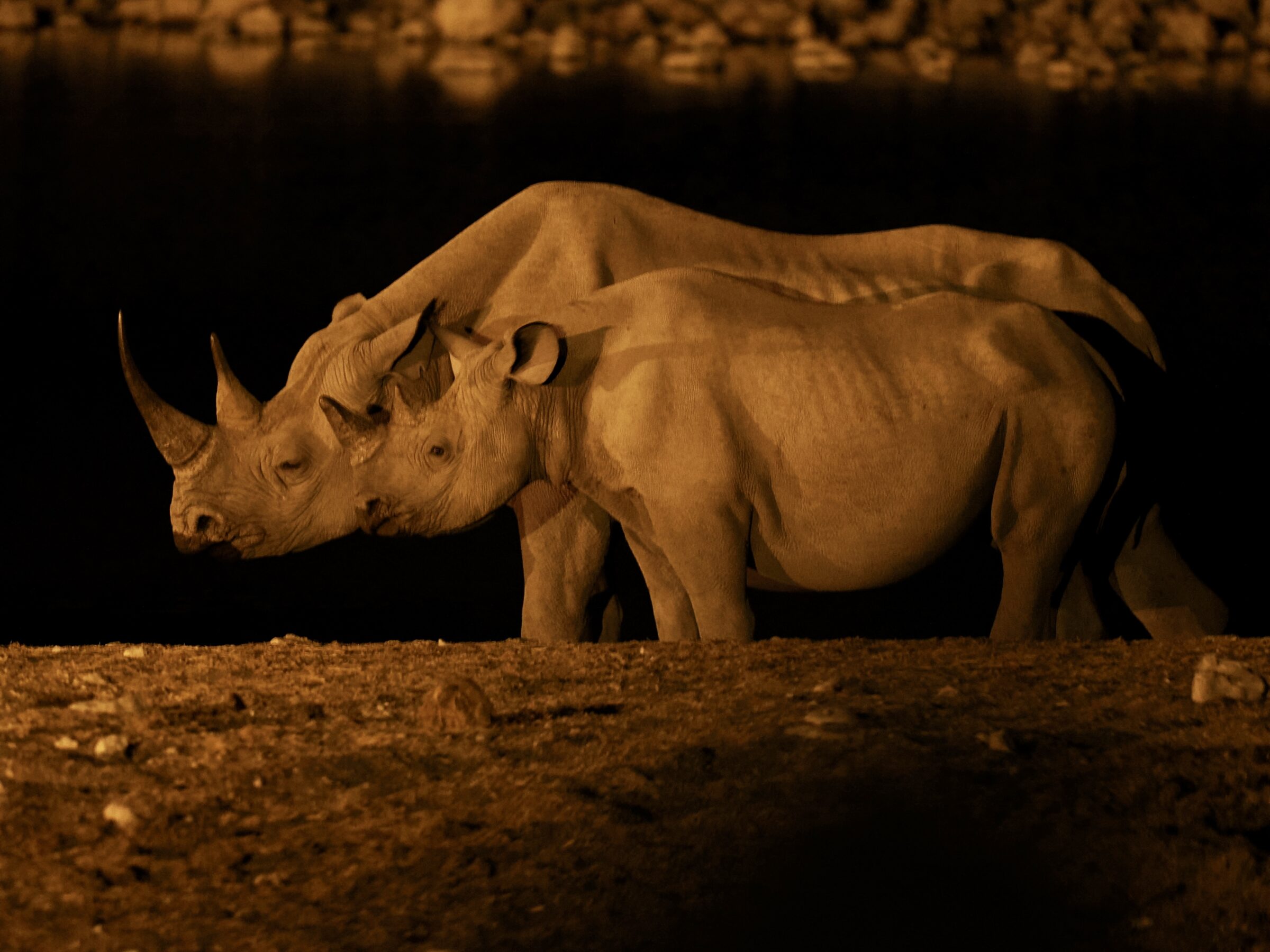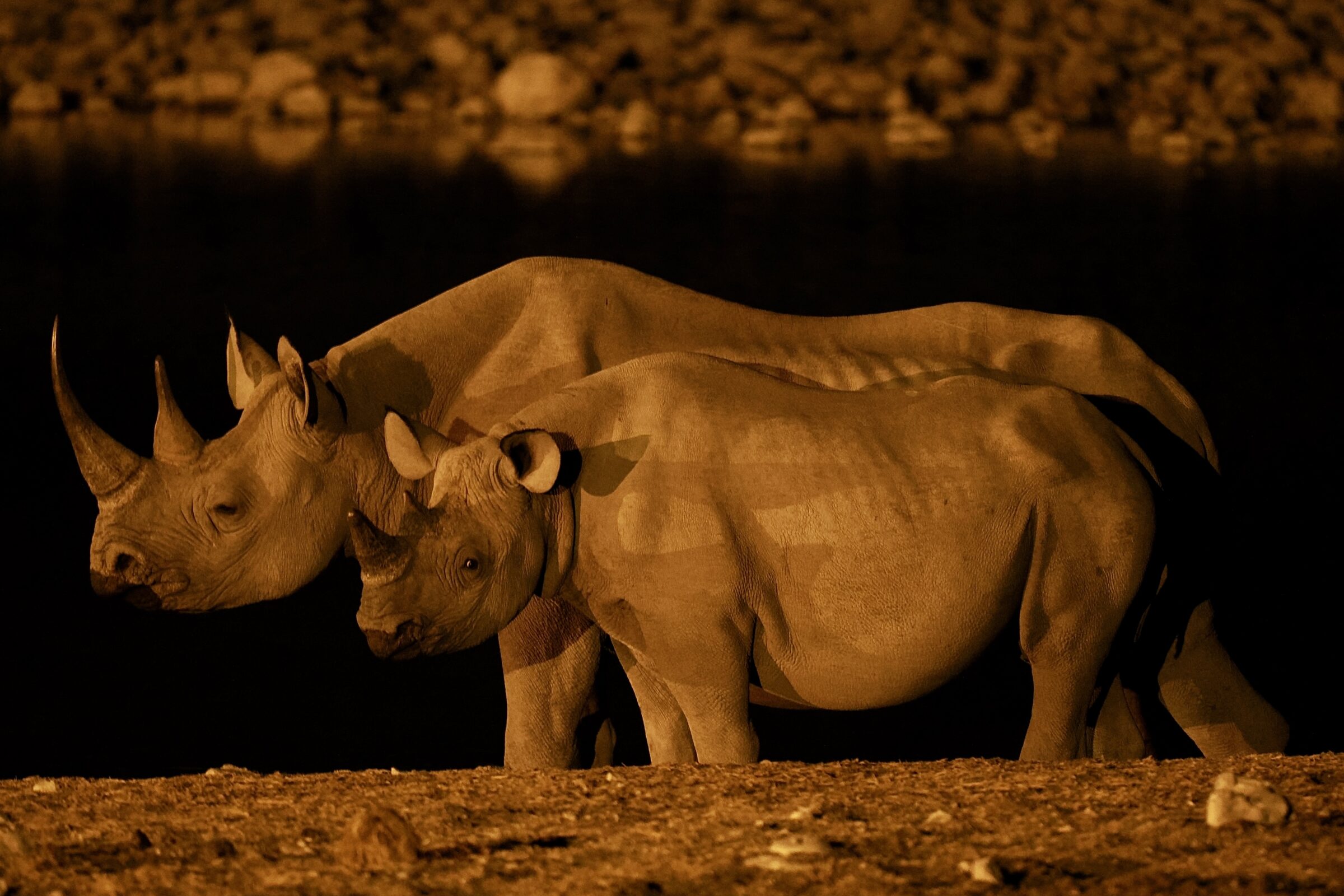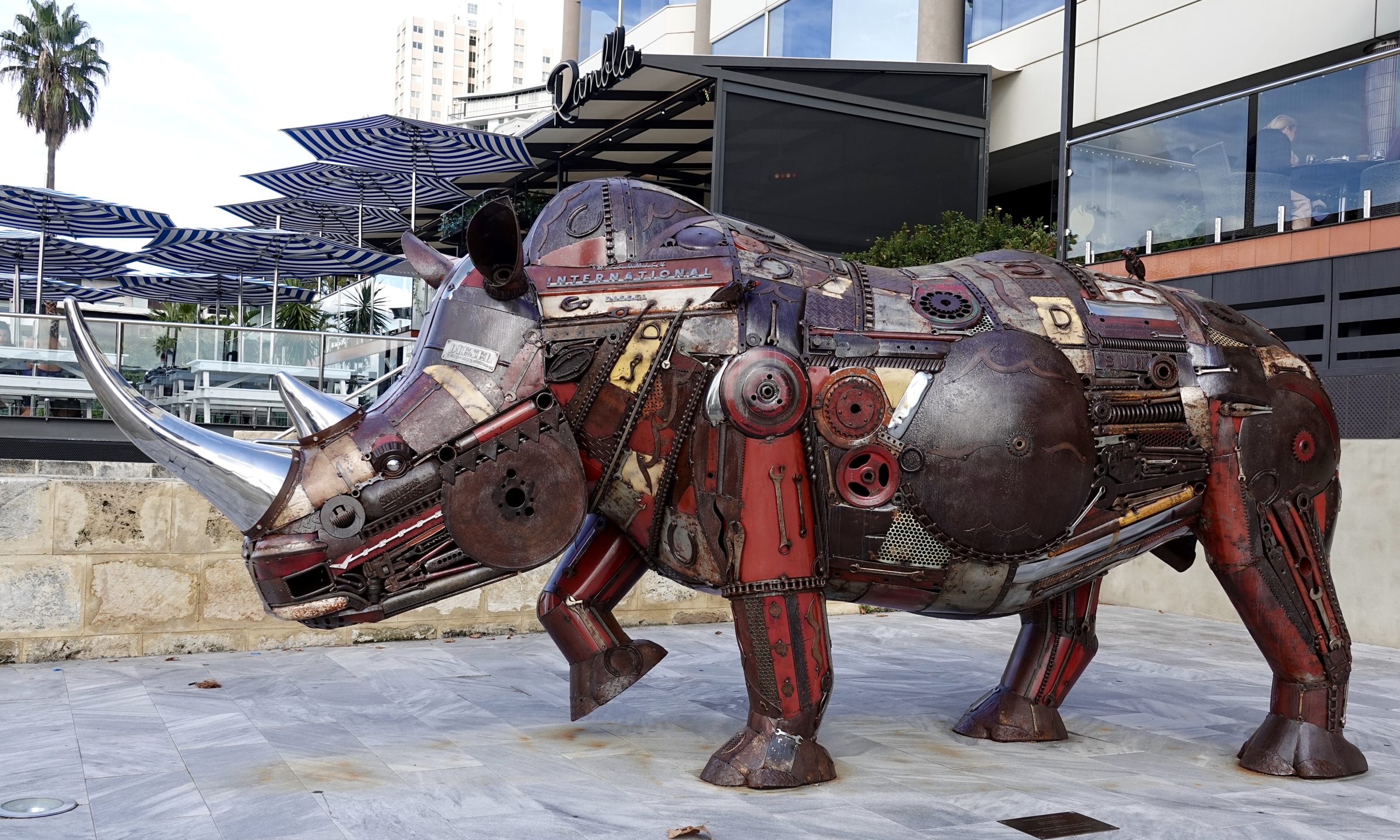Five rhinoceros species (within which are eleven subspecies) still walk “our” planet’s surface.
All are in trouble; their total number is lower than ever before in human history, and they now walk “freely” only within a tiny portion of their former range, in discrete populations in various National Parks and “Reserves”.
Diceros bicornis, commonly known as the “black” rhino, is the smaller, now rarer – and allegedly, more ornery – of the two African species.
It and Ceratotherium simum – the so-called “white” rhino – are in fact both grey.
The fifth night of November 2022 was a good one for rhino-watchers at the Okaukuejo waterhole; the rhinos’ demeanour was not at all ornery, and they broke only wind – loudly.
One Comment

